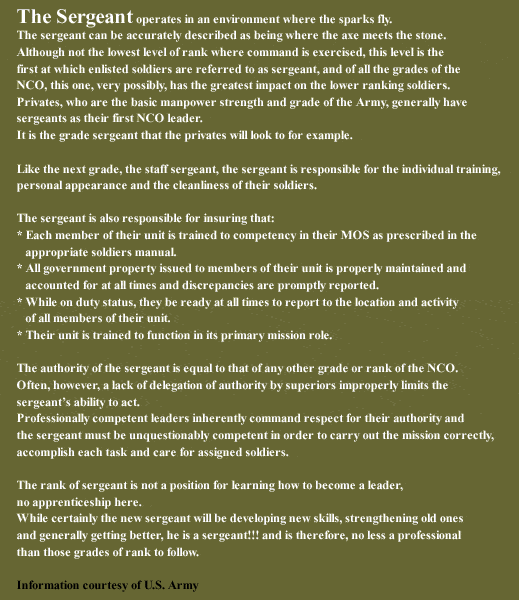

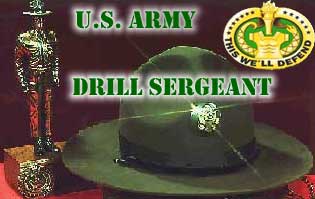


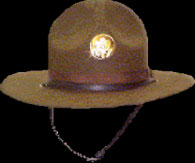

DRILL SERGEANT CREEDI am a Drill Sergeant |
|---|





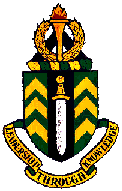


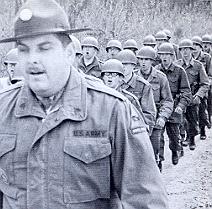
|
HISTORY OF THE DRILL SERGEANT In late 1962, the Secretary of the Army directed Stephen Ailes, the Assistant Secretary, to conduct a survey of recruit training in the Army. This survey was conducted over a long period of time and included a wide variety of experienced personnel. To insure his report would be valid, Secretary Ailes made a comprehensive survey, comparing the training techniques of the Marines, Army, Navy, and Air Force. The final report, as submitted to the Department of the Army, contained five principle findings, with appropriate recommendations and suggestions for eliminating the problems encountered. The comparisons of the training centers of the three services with those of the Army demonstrated the attitude of the noncommissioned officers within the Army training centers was very poor. There were contributing reasons, including the long working hours, the difficulty of the demanding nature of the work and lack of free time for family concerns. Inadequate staffing in the training centers caused much of this. In addition, it was determined that the caliber of noncommissioned officers being assigned to the Army training centers was far below the standards required by the other services. Another problem was the negative attitude of the trainer, which had a demoralizing affect on the trainee and resulted in a mental block between the recruit, and the trainer, and thus caused a negative impact on the qualified trainer and the quality of training presented. During the period April - June 1963, Pilot Trainer Courses were conducted at Fort Jackson, South Carolina, for selected officers and noncommissioned officers to participate in testing the revised concept of recruit training. Immediately following in July and August, this new training concept was tested with a training battalion at Fort Jackson and a training company at Ft Gordon, Georgia. The success of these tests resulted in the adoption of the new concept, to include the formation of Drill Sergeant Schools throughout CONARC. This was the beginning of the Drill Sergeant and was the first Drill Sergeant used to train recruits in the entire history of the recruit training programs throughout the Army. The Fort Leonard Wood Drill Sergeant School began training noncommissioned officers for Drill Sergeant duties in September 1964. |
|---|
